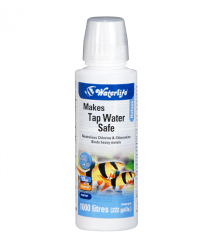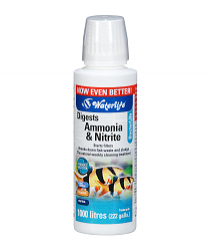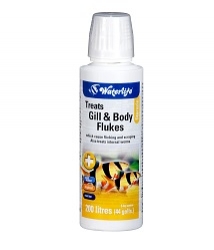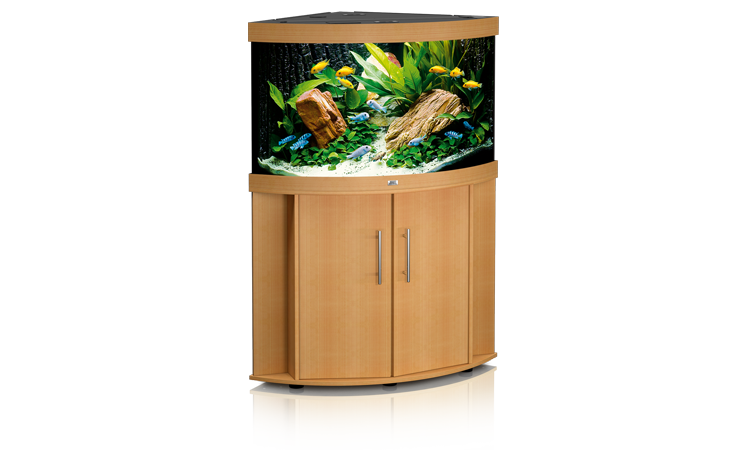Waterlife have been producing treatments for tropical, coldwater, marine and pond water for over 50 years. They produce a range of chemicals to condition the water to produce the ideal conditions for keeping fish of all types and treatments for a wide range of common and not so common fish diseases.


Water for keeping fish needs to be treated to remove chlorine and chloramines (if tap water is used), adjust and buffer pH and provide ammonia and nitrite reducing bacteria. We have been using Waterlife pH Buffers in our tanks since we have stocked fish. This ensures that the water going in after a partial water change is the same pH as the water taken out and also helps resist changes in pH over time. This reduces the stress on the fish and so helps keeps some of the commoner diseases at bay. Many diseases can be present in the water but unable to penetrate the fish’s defences when healthy. However if the fish becomes stressed these defences can break down, allowing disease to take hold.

Dechlorinator is essential in all cases when using tap water. Chlorine is added at the treatment works to kill bacteria and keep the water safe in the distribution system (part of my job for twelve years back in the day). Free chlorine may dissipate if the water is left for 24 hours or more but the chloramines (chlorine combined with other compounds in the water) will not. Both are toxic to fish and damage the mucus membranes. If it does not kill the fish outright itself, it will make them more susceptible to disease. Waterlife’s Tap Water Safe is one of the most concentrated dechlorinators on the market, so offers excellent value for money. Some of the brands I have seen sold in supermarkets for example require 2.5 times as much product per litre of water to have the same effect.

Adding Nitrosomonas and Nitrobacter bacteria, in the form of Waterlife’s Bacterlife to the water increases the ecosystem’s response rate to increasing ammonia from fish waste. Nitrogenous waste, generated from the metabolism of protein in the food and exuded into the water as ammonia by the fish, is highly toxic to fish and again if it doesn’t kill the fish outright makes them susceptible to disease organisms. In a river or lake it dissipates and is dealt with by the surrounding environment and ecosystems. In a fish tank it cannot go anywhere and over time the concentrations rise to dangerous levels. Waterlife’s Bacterlife contains different strains of these bacteria which will work at a wider range of pH readings helping to ensure highly toxic ammonia is broken down to less toxic compounds quickly. These helpful bacteria will colonise your filter and gravel and continue to work for you all the time the fish are producing bacteria. It is worth noting that their effectiveness deteriorates with falling temperature. Below 10 degrees celcius they pretty much stop working altogether. This is why you should stop feeding high protein fish food to pond fish during the winter.

Occassionally aquarium water may become “murky” for want of a better term. There are a variety of reasons for this. Usually and rather obviously it is a sign of poor water quality and the cause must be addressed. Excessive nutrients can cause algal or bacterial “blooms” in the water. Treatment with Watersafe’s Bacterlife will help reduce the availability of nutients and coupled with regular water changes will help keep the water clear but Stayclear contains a coagulant that encourages suspended particles to bind together into heavier particles that then drop to the bottom of the tank for removal during the next water change (using a gravel cleaner).

Should water quality deteriorate, or the fish become stressed for any other reason (such as the addition of new tank mates) then disease may ensue. One of the commonest diseases seen in ornamental fish is white spot (Ich infection – a free swimming single celled organism that, after infection produces white spots (surprise!) often described as looking like a coating of sugar grains over the fishes body). Fortunately the treatment for white spot is also one of the most effective. However a mistake often made is to cease treatment once the symptoms are no longer present. This will only lead to reinfection as the treatment is only effective against the free swimming form of the organism and so the treatment must be completed to ensure the whole life cycle has been disrupted.
Fungus appears as white cotton wool like growths on affected areas. The fungal infection can be present of its own accord but is commonly a secondary infection, following opening of wounds by a bacterial pathogen.

Two other fairly common diseases seen in aquarium fish are fin rot (columnaris bacteria infection) and ulcers (sores caused by other types of bacteria). Fin rot manifests as fraying fins and/or tail which can lead to complete loss of appendages and death. If caught early though it does respond well to treatment. Ulcers are pits in the skin of the fish with raised, inflamed edges, often bright red in colour, although sometimes without and actual pit forming. However these infections nearly always indicate that there is a water quality issue of some kind and this will need sorting before the treatment can become truly effective. There is little point adding treatment for disease to an aquarium with toxic water. It may improve some symptoms but they will only come back. It’s a bit like trying to give first aid to a burns victim while his clothes are still on fire. Our own best defense to infection is our skin. When this barrier is damaged we are vulnerable to infections. A fish is covered by a mucus layer that does the same job of keeping out pathogens. It is this mucus layer that weakens or disappears when the fish is stressed by poor conditions. Waterlife’s Fin Rot & Ulcers contains a compound that will effectively treat both condition as well as a host of other bacterial infections from other gram negative bacteria.

So for “everyday treatment” of aquarium water and easy, effective treatment of the commonest diseases, should something go wrong, we stock the full range of Waterlife treatments. Waterlife also produce a further range of treatments for less common diseases and pests, such as “hole in the head disease”, flukes, fish lice, leeches , anchor worm and the list goes on! They all provide an excellent common disease chart which we keep copies of in store and have an easy to follow page on their website.
So for quality, support and value for money you can’t really do much better than Waterlife’s range of water treatments for aquarium and pond fish. This is why we have been gradually switching over to these products on our shelves, rather than the less concentrated and often less effective supermarket brands. Water quality can be tested at home quite easily, using a number of different strips and kits and we would strongly recommend investing in the best you can afford to avoid or at least get early warning of problems so you can deal with them appropriately.
The Angell Pets Team






